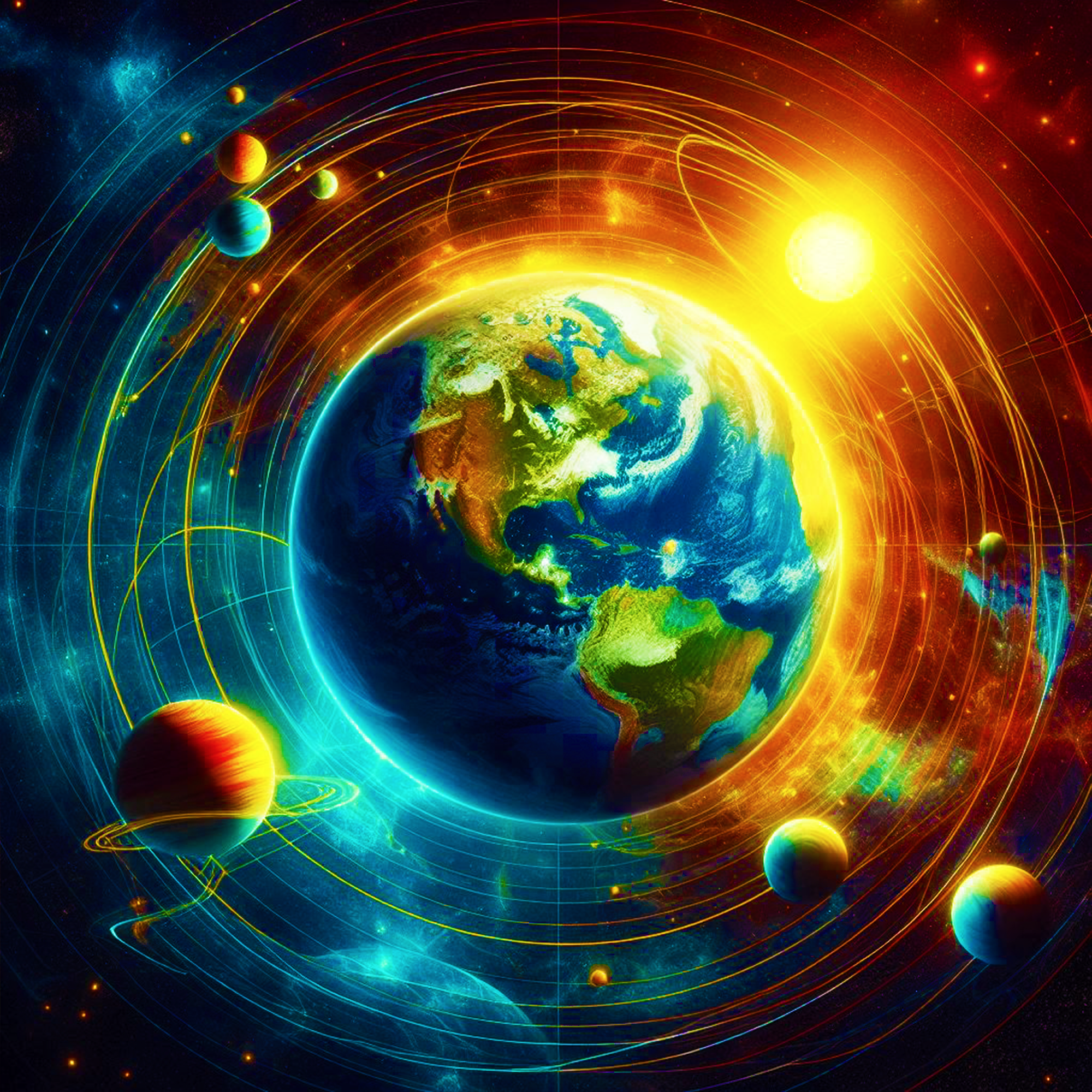What If Earth Was the Center of the Solar System?
Imagine Earth at the center of our solar system; what would have changed in our concept of the cosmos?
For centuries, humans believed Earth was the center of the universe. This system, with its Ptolemaic model, was championed by Ptolemy and widely accepted in ancient times, before it was eventually replaced by the heliocentric model, thanks to Copernicus, Galileo, and Kepler. What if, hypothetically, Earth would be the center of the solar system? This thought experiment would have offered fascinating insights regarding how different our present understanding of the cosmos would be.
Birth and Death of the Geocentric Model: A Historic Approach
Ptolemaic System
The geocentric model meant that Earth was stationary at the centre of the Universe with all celestial bodies revolving around Earth. In this model, the Sun, Moon, stars, and planets described rather convoluted paths around Earth in features known as epicycles. This model was accepted for more than a thousand years because of its consistency with observable phenomena and religious doctrines of the time.
The Shift to Heliocentrism
Copernicus proposed a heliocentric model, which was later supported by Galileo through telescopic observations and Kepler through his three laws of planetary motion. It had evidently shown that the Sun and not the Earth is at the center of the solar system. This perspective totally changed towards astronomy and our understanding about the cosmos.
Solar System with Imaginary Earth Center
Orbital Dynamics
If Earth is at the center of the solar system, the significant difference that can come is in the planetary orbits. In place of an elliptical orbit of the planets around the sun, they would have to move in very complex and convoluted orbits around Earth. The Sun, too, would have to orbit Earth, which then completely alters our ideas about our cycles of day and night.
Day/Night Cycles
In that case, one could say it would be the orbit of the Sun around Earth which would be responsible for a day and a night. The apparent movement of the Sun across the sky would then become tremendously different; it is going to change the length and nature of the days, seasons, and climate patterns.
Physics and Astronomy Implications
Newton’s Laws in Motion
Newton’s laws of motion and gravitation are based on a heliocentric model. If Earth were at the center, these would have to be rewritten to accommodate the observed motions of the planets. This could be really complex gravitational interactions and forces that would definitely be counterintuitive in terms of our present understanding.
Relativity and Space-Time
Einstein’s theory of general relativity is also based on a heliocentric framework. The description of gravity by the theory as a bending of space-time by mass would be weakened in an Earth-centered solar system, calling for another way of understanding gravity and the fabric of spacetime.

Observational Astronomy
Star Positions and Movements
In a geocentric model, the position and apparent motion of stars would be quite dissimilar. The type-of-parallax measurements used to calculate stellar distances would come out different, and might drastically modify our comprehension about the size and structure of the universe.
Cosmic Phenomena
For instance, phenomena like retrograde motions of planets would be easily explained using a heliocentric model. With the use of multiple epicycles and deferents, explanations would be cumbersome, and it would be far more difficult for students to learn about astronomy in this manner.
Technological and Practical Implications
Space Exploration
A geocentric model of the universe would make navigation of space very dicey. All our space missions are today based on predictable, elliptical orbits of planets orbiting the Sun. More complicated, unpredictable orbits would make space travel utterly not practical to plan and execute.
Satellite Systems
Our satellite systems, as engineered around orbital mechanics, would be severely disrupted. Heliocentricity understands the concept of gravity and motion in a way that communication, GPS, and weather forecasting satellites have relied upon. An Earth-centered model means unpicking ambiguities and rewriting satellite design and deployment strategies.
Conclusion
Letting our imaginations assume Earth being at the center of the solar system gives us a vivid look at just how our concept of the cosmos might drastically change. From changing the basic physics laws to complicating space travels, let alone the general conception of the universe, this thought experiment makes us realize how deep an impact the heliocentric model had on modern science. Though a geocentric model acted as a chequered path in the evolution of astronomy, elegance and simplicity—both characteristics the heliocentric framework possesses with accuracy—are the bases for contemporary understanding of the universe.
Stay tuned while we get onto more intriguing questions about our universe!
— Dr. Alice Thompson, Astrophysicist

A geocentric model complicates planetary
motion and contradicts the fundamental laws
of gravity.




